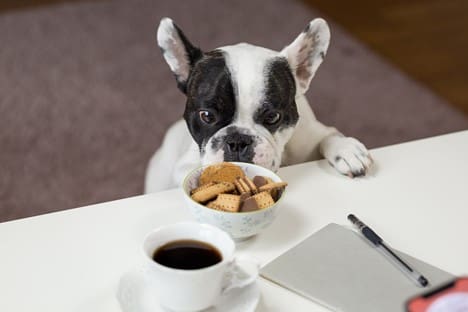Do you have a pet dog who gets overly aggressive at mealtime? Some dogs may exhibit food aggression and become very possessive about their food, even protecting it from their owners.
Food aggression may become a significant problem for dog owners if it is not addressed early on, and you may need the assistance of specialists to eliminate it. Let’s go through what food aggression is, why dogs do it, and how to train dogs with food aggression.
What Is Food Aggression In Dogs?
Food aggression is a resource-guarding behavior that dogs may exhibit during meal times. If someone comes too close to their meal, dogs may get defensive and bite, growl, or display other symptoms of hostility.
This behavior usually occurs around treat times, which can be challenging for dog owners to manage. Food aggression is classified into three stages: mild, moderate, and severe. To help you determine which stage of food aggression your dog is in, here are a few characteristics that dogs in these stages may exhibit:
- Mild: At this stage, your dog will show mild signals of aggression during mealtimes, such as growling or exposing its teeth if you approach the food
- Moderate: At this stage, the aggression may increase from growling or showing teeth to your dog lunging or snapping at you if you approach their food
- Severe: This is the most dangerous stage of food aggression, and if your dog is in it, it will most certainly bite you if you approach its meal
If your dog is experiencing mild to moderate food aggression, there are a few steps you can take to train it and eradicate the problem. However, if your dog is in the moderate to severe phases of food aggression and you have children, this situation can quickly escalate into a dangerous one.
Therefore, if you have children and a dog displaying indications of food aggression, we recommend calling Precision Dog Training Academy to resolve this issue.
Why Do Dogs Develop Food Aggression?
According to some behaviorists, dogs exhibiting food aggression could react to their first encounters with food as puppies when the mother feeds the entire litter at once and the puppies stampede to grab a piece of the meal. This continues when the puppies are fed from the same bowl and nurtured together.
The struggle the puppies go through to receive their fair amount of food might cause them a great deal of stress. Later in the dog’s life, due to stress and the fear that people or other dogs would take their food away if they approach it, this might result in food aggression.
In addition, certain dog breeds have a hereditary tendency for dominance or aggression and may develop protective behaviors around food linked to a pack mentality. Breeds with such guarding directions include German Shepherds, English Springer Spaniels, and Rottweilers. However, these instincts usually pertain to property or animals.
How to Train Dogs with Food Aggression?
There are a few ways you can train a dog that may be showing signs of food aggression to eliminate the problem and keep it from worsening. Here are a few tips on training dogs with food aggression.
- Try to feed your dog from your hand if the dog is in the mild and moderate stages of food aggression. The dog may show signs of hostility at first but will soon realize that you are not going to take away its food
- Train your dog to sit or stay when you command it and have them sit and wait while you prepare their meal. By doing so, you will establish a peaceful pattern during mealtimes, and the dog will realize that once you put the food bowl down, the food will not go anywhere
- Touch your dog’s food bowl. However, please do not take any food out of it. You can also talk to your dog in a gentle tone while doing so. When you repeat this step a few times, your dog will realize that you are not going to take away its food if you come near it
- Sit on the food a few feet away from your dog’s food bowl. Being present near your dog while it feeds will make the dog realize that you do not intend to take away its food if you are near it
- Do not put your hand inside your dog’s food bowl multiple times while eating or take away their food bowl during meals, as this can become irritating for them, and they may show aggression to stop you from doing so.
Animals are much similar to humans, and if you are eating and someone puts their hands inside your food or takes your plate away a few times, even you will become irritated. Therefore, treat your animals the same way and try to make their mealtime as relaxed and enjoyable as possible
Our Final Thoughts
By following the training techniques mentioned above, you can prevent and eliminate signs of food aggression from your dogs. Moreover, if these tips do not help, you can seek help from the professionals at Precision Dog Training Academy.






